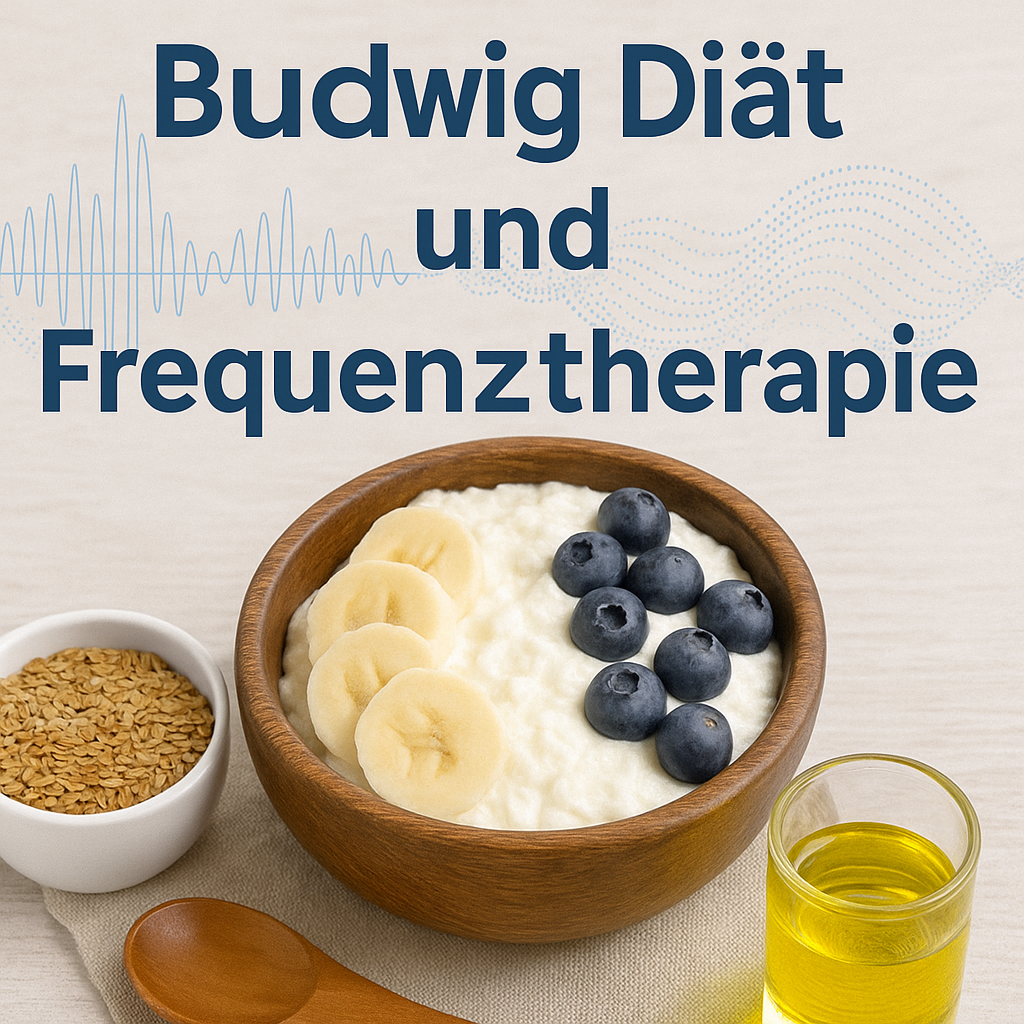
The Budwig Diet: Natural support in cancer prevention and treatment
Introduction
The Budwig diet has been an integral part of many alternative cancer therapies for decades. Developed by the German biochemist Dr Johanna Budwig, it is based on a special combination of high-quality omega-3 fatty acids and sulphur-containing proteins. The aim is to optimise cellular respiration, inhibit inflammatory processes and support the body's self-regulation. In the frequency therapy practice, we see the Budwig diet as a valuable addition to energetic methods such as bioresonance or vital field therapy.
Origin and basic principles of the Budwig diet
Dr Johanna Budwig was a pioneer in the field of fat research. In the 1950s, she recognised the importance of polyunsaturated fatty acids - especially alpha-linolenic acid - for cell health. The central combination of her diet consists of:
- Linseed oil (rich in omega-3 fatty acids)
- Low-fat quark (rich in sulphur-containing amino acids)
Thoroughly mixing these two components creates an emulsion that can be absorbed particularly well by the body.
Other key elements of the diet:
- Avoiding trans fats, sugar and industrially processed foods
- A diet of fresh fruit, vegetables, wholemeal products and natural fats
- Sufficient sunlight and exercise
The Budwig diet and its importance in cancer
Dr Budwig's theory is based on the assumption that impaired cellular respiration is a central problem in cancer. Her emulsion of quark and linseed oil is said to reactivate cell respiration and thus enable cell metabolism to regenerate.
Possible mechanisms of action:
- Strengthening of the cell membrane through essential fatty acids
- Promotion of oxygen transport
- Anti-inflammatory effect of omega-3 fatty acids
- Antioxidant effects through natural vitamin E and secondary plant substances
Important: The Budwig diet does not replace conventional medical therapy - however, it can be a useful complementary measure.
Integration of the Budwig diet into frequency therapy
In our practice at NLS Informationsmedizin GmbH, we combine energetic therapy approaches with targeted nutritional counselling. The Budwig diet harmonises perfectly with frequency therapy, as both approaches aim to activate the body's self-healing powers and release energetic blockages.
Synergy effects with frequency therapy:
- Linseed oil and quark mixture promotes the flow of energy at cellular level
- Simultaneous application of vital field or bioresonance frequencies can improve resorption capacity
- Cell communication is supported by harmonious frequency impulses
Practical implementation in everyday life
A typical Budwig breakfast could look like this:
Ingredients:
- 2 tbsp organic linseed oil
- 100 g organic low-fat quark
- 1-2 tbsp milk or water to emulsify
- 1 tsp honey
- Fresh fruit (e.g. berries, apple, banana)
- 1 tbsp freshly ground linseed
Preparation:
Mix the quark with linseed oil and a little milk to form a creamy mixture, mix in the honey and fruit, sprinkle with linseed - done!
Scientific classification
The Budwig diet is not yet part of evidence-based oncological guidelines. However, there are studies investigating the positive influence of omega-3 fatty acids on inflammation parameters, immune modulation and quality of life in cancer patients. Clinical studies specifically on the Budwig diet are rare, which limits its recognition by conventional medicine.
Conclusion: Think holistically - act naturally
The Budwig diet offers a nutritionally sensible way of supplying the body with high-quality fats and proteins. As an accompanying measure in frequency therapy, it often opens the door to deeper processes of healing and regulation.
If you would like to find out more about the combination of the Budwig diet and frequency therapy, we cordially invite you to a personal consultation in our practice.
Disclaimer
The content presented here is for general information purposes and is in no way a substitute for diagnosis or treatment by a doctor or alternative practitioner. The Budwig diet and frequency therapy are not recognised by conventional medicine.
